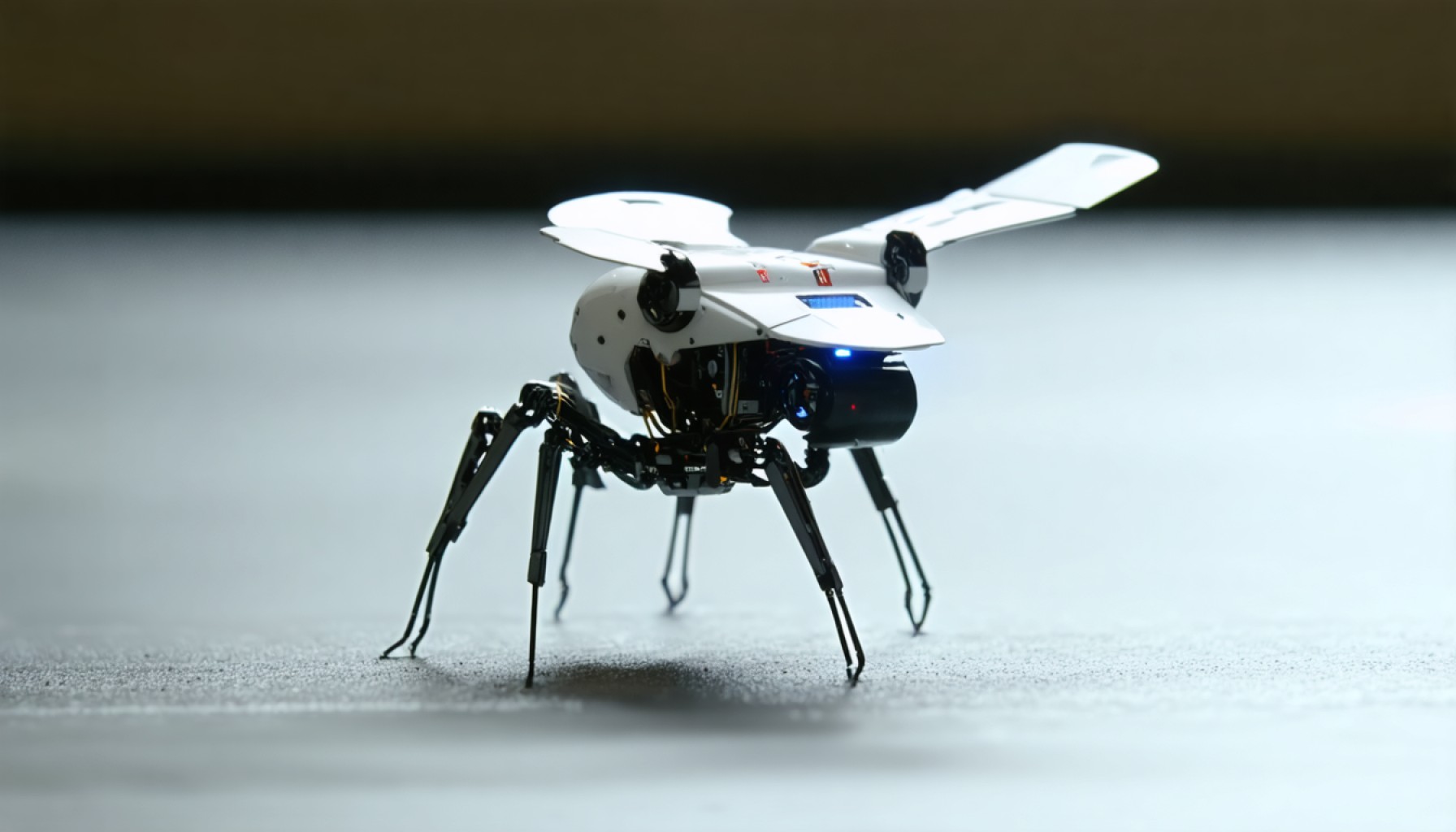- A tiny, one-legged robot developed at MIT uses insect-like wings instead of traditional motors to achieve precise movement.
- The design represents a significant departure from conventional robotics, particularly in overcoming challenges faced by miniature robots in real-world environments.
- The wings provide control and lift for accurate landings, eliminating the need for bulky motors and enhancing efficiency.
- Currently tethered, the robot’s off-board power system allows for flexible testing and reduced power consumption.
- This innovative robot can carry payloads ten times its weight, demonstrating significant potential for practical applications.
- The development exemplifies creative problem-solving and aims to enable robots to adapt more successfully to diverse environments.
- MIT’s groundbreaking work signals a future where adaptable, cost-effective robots become integral to everyday life.
Amidst the bustling corridors of MIT’s robotics lab, a revolutionary breakthrough takes flight—though not quite in the way you might expect. A tiny, one-legged robot, smaller than a paperclip, hops across the ground with astonishing precision. Its secret lies not in traditional wheels or motors, but in an extraordinary set of insect-like wings that enable it to navigate the world’s unpredictable terrains.
This innovative creation embodies a bold departure from conventional robotics design. Traditional robots often struggle in environments outside controlled lab conditions, stumbling through the complex challenges of the real world. Particularly for miniature robots, each stride is a daunting endeavor, where smaller means shakier. Yet, the engineers at MIT have found a way to bypass these constraints with their winged wonder.
The robot’s small wings don’t flutter for flight in the typical sense. Instead, they imbue the machine with just enough lift to control its movements, ensuring its single-legged hops land with pinpoint accuracy. Such a design negates the need for bulky motors which have previously hindered the evolution of small-scale robots.
Currently, the robot is a tethered pioneer—its power and control systems stationed off-board. This setup allows researchers vital flexibility to test the boundaries of mobility, pushing the robot’s capabilities while keeping power consumption low. Efficiency, after all, is the imperative quest of modern robotic engineering.
Though compact drones have paved the aerial way, innovations like these promise to tread where others dare not go. By shedding the weight of conventional motors, this hopping robot not only minimizes costs but maximizes potential. Remarkably, it can haul payloads ten times its weight, embodying the prowess of David in a world of Goliaths.
So, what makes this hopping machine a game-changer? It’s not just about conquering new terrains. This winged marvel is a testament to creative problem-solving and redefining what tiny machines can achieve. It symbolizes hope for a future where robots adapt effortlessly to their environments, becoming indispensable allies in our daily lives.
As robotics surges into new realms of possibility, MIT’s latest leap heads the charge, inspiring enthusiasts and skeptics alike. One thing is certain—this is a small step for a robotic hopper, but a giant leap for robotic kind.
The Future of Robotics: A Small Hopper Making a Big Impact
Revolutionary Robotic Designs: How a Tiny Robot is Changing the Game
The bustling corridors of MIT’s robotics lab have witnessed a groundbreaking innovation—a one-legged robot, smaller than a paperclip, that hops with precision reminiscent of insect agility. This innovation, veering away from traditional robotics design, holds promise for a future where robots navigate unpredictable terrains with ease.
Key Features and Specs
– Size and Weight: Comparable to a paperclip, highlighting its minimal footprint.
– Mechanism: Uses insect-like wings to achieve hop precision rather than traditional wheels or bulky motors.
– Payload Capacity: Can carry loads ten times its weight, showcasing its strength despite its tiny size.
– Mobility: Tethered power and control systems enable flexibility in experiments without being encumbered by heavy on-board systems.
How-To Steps & Life Hacks
1. Understanding Wing Mechanism: The robot’s wings offer control in movement rather than flight, much like a stabilizer. This allows the robot to adapt to complex terrains.
2. Maximizing Efficiency: With power systems stationed off-board, information is relayed effectively, ensuring optimal performance without energy wastage.
3. Testing Environments: Ideal for varying terrains due to its lightweight design, making it perfect for research in otherwise inaccessible areas.
Real-World Use Cases
– Search and Rescue Missions: This tiny hopper could navigate through debris or tight spaces that larger robots cannot access.
– Space Exploration: Its lightweight and capability to handle tough terrains make it ideal for planetary explorations.
– Medical Field: Could be adapted to navigate within the human body for medical procedures or diagnostics.
Market Forecasts & Industry Trends
The demand for miniaturized, efficient robots is predicted to grow significantly:
– Robotics Sector Growth: According to Allied Market Research, the global robotics market is expected to reach $189.36 billion by 2027.
– Miniaturized Robots Trend: Miniature robots will likely play a vital role in industries including healthcare, defense, and space exploration due to their versatility and cost-efficiency.
Pros & Cons Overview
Pros:
– Unmatched precision and adaptability on uneven terrains.
– Significant payload capacity relative to size.
– Reduced costs and maintenance compared to larger robotics systems.
Cons:
– Current tethered design limits its range of operation.
– Still in the development phase, not yet ready for commercial or widespread application.
Security & Sustainability
– Energy Efficiency: The off-board systems mean lower power consumption.
– Environmental Impact: Smaller-scale components lead to less material usage and waste.
Actionable Recommendations
– For Innovators: Incorporate similar lightweight, non-traditional mechanisms in designs to enhance efficiency and versatility.
– For Investors: Consider investing in burgeoning miniaturized robotics markets, particularly those focusing on sustainable practices.
– For Academics: Further research into biomimicry and its applications in robotics can open new frontiers in adaptable robot designs.
For more insights into cutting-edge robotics and innovation, visit MIT.
